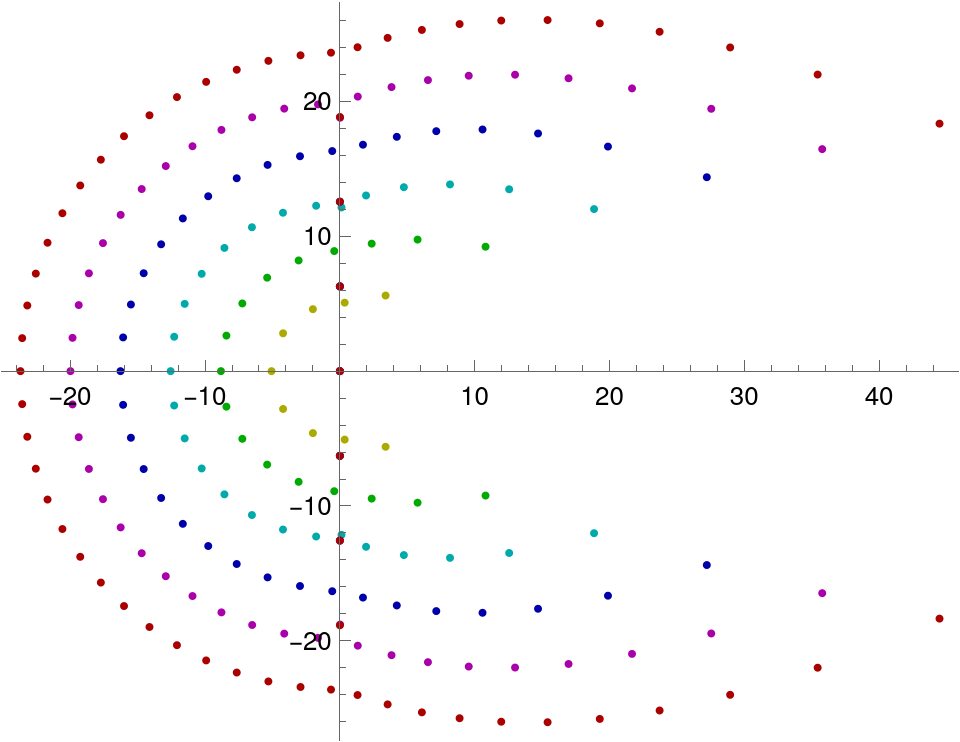During a talk I was at today, the speaker mentioned that if you truncate the Taylor series for $e^x - 1$, you'll get lots of roots with nonzero real part, even though the full Taylor series only has pure imaginary roots.
If you plot the roots of truncations of $e^x - 1$ (or check out the example plots below), you can see lots of cool features. I'd like to know where they come from! I know there's a vast literature on polynomials, but I'm a total beginner, and I don't know where to start.
Here are a few specific questions:
The roots of a high-degree truncation seem to fall into two categories: roots that lie very close to the imaginary axis, and roots that lie on a C-shaped curve. (Another interpretation is that all of the roots lie on a curve, which has a very sharp kink near the imaginary axis.) Can you write down an equation for the curve?
If you put the roots of a lot of consecutive truncations together on the same plot, you'll see definite "stripes" to the right of the imaginary axis. Once a stripe appears, each higher-degree truncation sticks another root onto the end, making the stripe grow outward. Can you write down equations for the stripes?
If $k$ is odd, the truncation of degree $k$ has no nonzero real roots. If k is even, the truncation of degree $k$ has one nonzero real root. The location of this root depends almost linearly on $k$. Why is the dependence so close to linear? Does it get more linear as $k$ increases, or less?
Can roots be given identities that persist across time? That is, as $k$ increases, can you point to a sequence of roots and say, "those are all the same individual, which was born at $k$ = so-forth, is following such-and-such trajectory, and will grow up to become the root ($2\pi i\cdot$ whatever) of $e^x - 1$"?
Example plots
Each color in this plot represents the roots of a different truncation. The roots move out from the origin as the degree of the truncation grows. This plot only shows truncations at multiples of ten terms.
The next two plots show all truncations out to sixty terms.
The negative roots of a given truncation almost form a perfect semicircle around zero, but this plot reveals tiny differences in their absolute values (unless there's a systematic problem with Mathematica's root estimation, which seems to be numerical for high-degree polynomials).
If $k$ is odd, the truncation of degree $k$ has no nonzero real roots. If $k$ is even, the truncation of degree $k$ has one nonzero real root. The location of this root depends almost linearly on $k$, but the residual plot shows nonlinearity (again, unless there's a systematic problem with Mathematica's root estimation).






